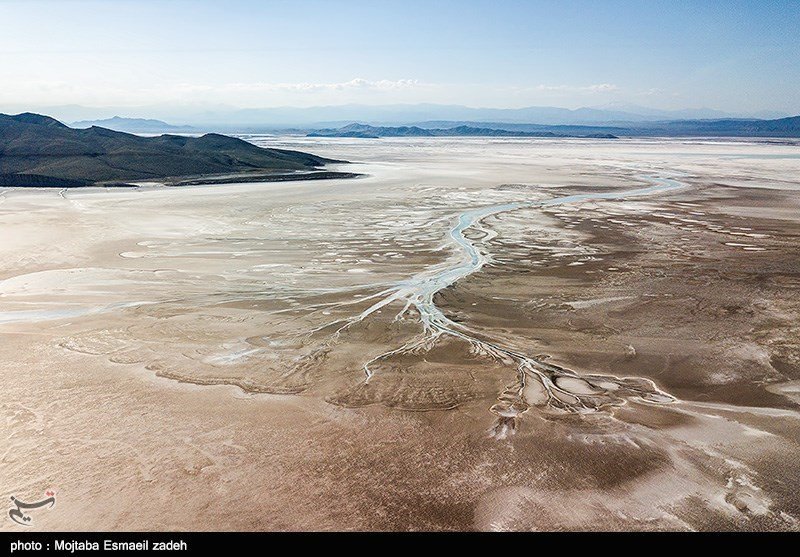Water flow to Lake Urmia drops by 400mcm yr/yr: environment chief

TEHRAN — Water flow to Lake Urmia, northwestern Iran, has decreased by 400 million cubic meters year on year, chief of the Department of Environment (DOE) has said.
As per the figures published in Lake Urmia Restoration Program website long-term average discharges of water amounted to some 3.1 billion cubic meters. Decreasing the water flow into the lake is considered as one the main contributory factors in the lake dryness
Lake Urmia which was the largest salt-water lake in the Middle East and twice as large as Luxembourg has been facing great challenges for the past 20 years. The lake’s volume of water and surface has drastically dropped over this period. In 1997 the volume of water at the lake measured at 30 billion cubic meters which dramatically decreased to half a billion cubic meters in 2013 and again rose to 2.5 billion cubic meters in 2017. While the lake had a surface area of 5,000 square kilometers in 1997 the surface shrunk to one tenth of that to 500 square kilometers in 2013.
Unsustainable development at the wetlands basin including agricultural practices, dam construction and depletion of groundwater resources as well as climate change and lower precipitation levels have all contributed to the lake dryness to different extent.
“The reason behind the decreased flow of water to the lake is storing the water behind the dams,” Issa Kalantari regretted, YJC reported on Tuesday.
“We human beings first devastate something and then start to think about restoring it by bearing enormous expenses,” Kalantari said, adding that while climate change has an 18 percent share of the lake’s disappearance the major cause of the lake drainage is “us”.
“We are opportunists and due to our arrogance, the gaps in our knowledge and our shortsightedness we want everything for the present,” he lamented, stating, “now because of the climate change, low precipitation and large-scale exploitations it is extremely difficult to restore the wetlands nationwide.”
The past months precipitation has increased Lake Urmia mean precipitation levels by 23 percent but the Ministry of Energy has not fulfilled its commitment to release the water into the lake and the water is now stored behind the dams [mainly for agricultural purposes], he explained.
Unfortunately, Kalantari said, “in Iran we do not appreciate the importance of long-term plans and all our wetlands are now drying up.”
Adapt to new conditions
Mohammad Darvish, environmental activist and the board member at Research Institute of Forests and Rangelands, has said that inter-basin water transfer does not restore Lake Urmia and the restoration will be completed once people residing the lake basin start to adapt themselves to the current conditions.
The lake water is only enough to feed some 300,000 hectares of farming lands while there are 680,000 hectares of lands in the region, and that’s why the lake is meeting its end, YJC quoted Darvish as saying on Monday.
The locals should focus on tourism to earn a living and shifting to clean energies, such as solar energy, to generate incomes, he suggested.
Darvish went on to say that one of the main culprit of lake dryness is farming sugar beet which is a water intensive product.
Transferring water from Aras, a river flowing through Turkey, is not going to help revive the lake, this would only act as painkiller and only reduce the symptoms, he explained, stating, “the restoration of the lake will be completed once we start to use the lake in accordance with its ecological capacities.”
MQ/MG
Leave a Comment